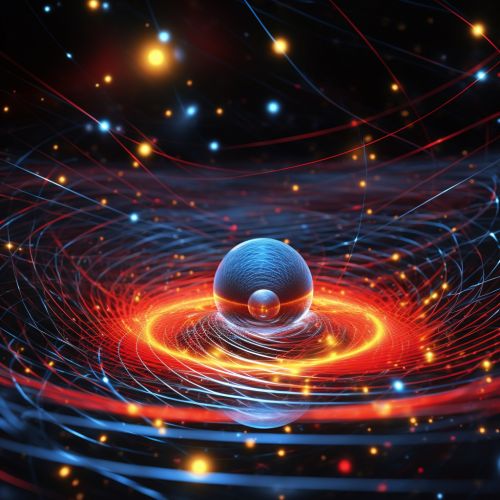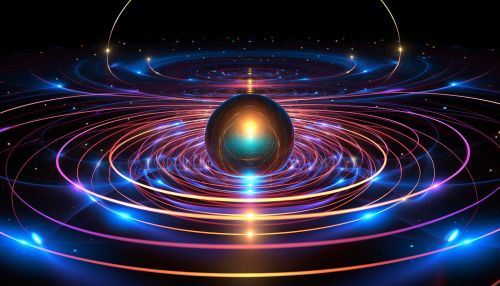Non-Abelian statistics
Introduction
Non-Abelian statistics, also known as anyonic statistics, is a branch of quantum mechanics that studies the behavior of particles in two dimensions that do not obey the familiar Bosonic or Fermionic statistics. Instead, these particles, known as anyons, exhibit a unique behavior where their quantum state may change when they are exchanged, a property that is fundamentally non-Abelian.


Anyons and Non-Abelian Statistics
In the world of quantum mechanics, particles are typically classified as either bosons or fermions. Bosons, such as photons, are particles that can occupy the same quantum state, while fermions, like electrons, cannot. This is due to the spin of the particles, with bosons having integer spin and fermions having half-integer spin. However, in two dimensions, a new class of particles known as anyons can exist. These particles can have a spin that is neither integer nor half-integer, leading to the possibility of non-Abelian statistics.
Non-Abelian statistics is a term used to describe the behavior of anyons when they are exchanged. In contrast to bosons and fermions, the quantum state of a system of anyons can change when the particles are exchanged. This is due to the fact that the wave function of the system does not simply pick up a phase factor, as is the case with bosons and fermions, but can be transformed by a unitary matrix. This property is fundamentally non-Abelian, as the result of multiple exchanges depends on the order in which they are performed.
Mathematical Description
The mathematical description of non-Abelian statistics involves the use of braid theory, a branch of topology that studies the properties of objects that can be transformed into each other through continuous deformations, including stretching and bending, but not tearing or gluing. In the context of non-Abelian statistics, braid theory is used to describe the exchange of anyons in a two-dimensional system.
The key mathematical object in this description is the braid group, which is a group structure on the set of all possible exchanges of a given number of anyons. The elements of the braid group are sequences of exchanges, and the group operation is the concatenation of sequences. The non-Abelian nature of the statistics comes from the fact that the braid group is non-Abelian, meaning that the order of operations matters.
Physical Implications and Applications
The existence of non-Abelian statistics has profound implications for the field of quantum mechanics and potentially for the development of quantum computers. The unique properties of anyons and their non-Abelian statistics could be used to create a new type of quantum computer, known as a topological quantum computer. In this type of computer, information would be stored in the quantum state of a system of anyons and quantum computations would be performed by exchanging the anyons.
The advantage of a topological quantum computer is that it would be inherently resistant to errors. This is due to the topological nature of the information storage and processing, which means that it is not sensitive to small perturbations. This would make topological quantum computers a promising avenue for the realization of fault-tolerant quantum computation.
Conclusion
Non-Abelian statistics is a fascinating and complex field of study that challenges our traditional understanding of quantum mechanics. The unique properties of anyons and their non-Abelian statistics open up new possibilities for quantum computing and potentially other areas of physics. While the field is still in its early stages, the potential applications of non-Abelian statistics are promising and warrant further exploration.
